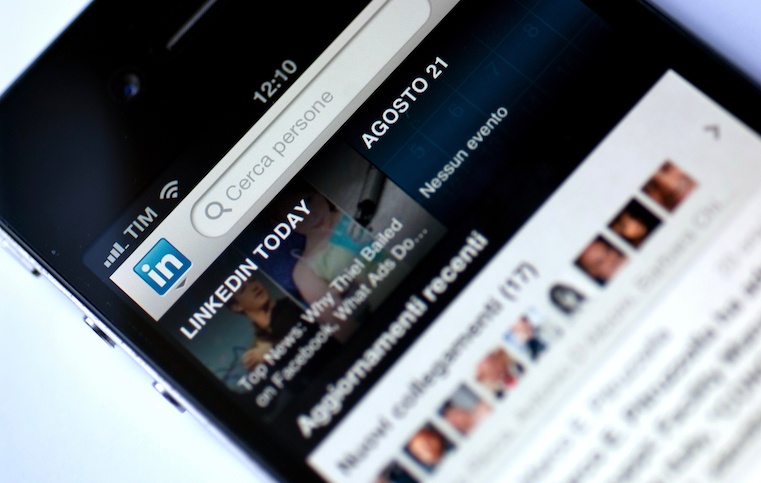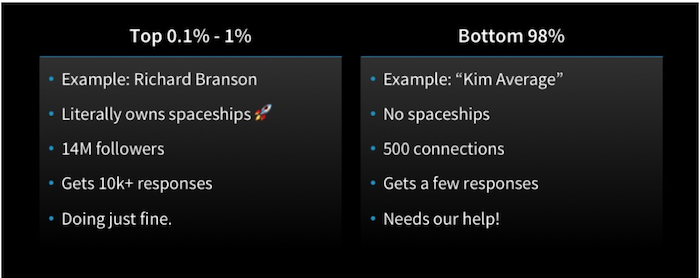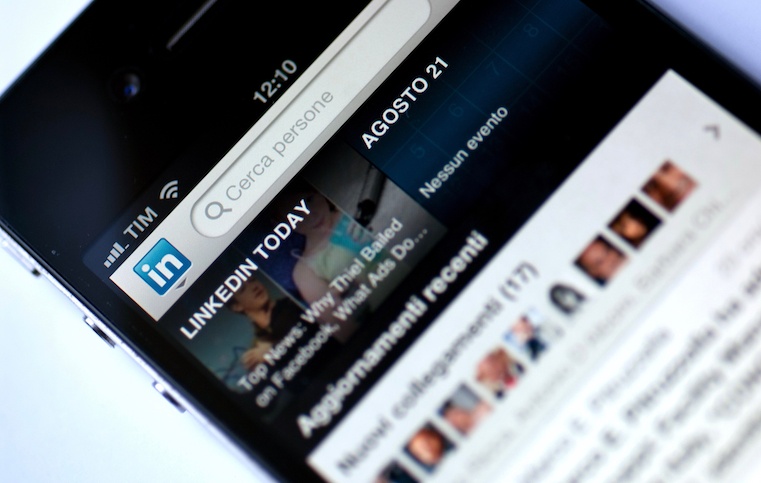The changes were spurred when the professional networking site discovered that the top 1% of content creators -- also known as "power users," or perhaps influencers -- were receiving the vast majority of engagement with their posts. Why LinkedIn Changed Its Feed Ranking Algorithm Year over year, LinkedIn has experienced noticeable growth in overal engagement with posts appearing in its feed -- an average increase of over 50%, the company says. But, LinkedIn says, there was a problem: The engagement was not evenly distributed, and the site was "in danger of creating an economy where all the gains in viral actions accrued to the top 1% power users." Emerging brands and content creators, meanwhile, were actually receiving less and less engagement on their posts. Prior to this overhaul, the feed would prioritize posts according to how likely a given viewer was to engage with it -- to like, comment on, or reshare it. According to Barrilleaux and Wang's findings, creators who receive 10 or more likes on their content are 17% more likely to post again in the following week. We've already covered the three pillars that LinkedIn's new model takes into account when ranking creator content: How likely a viewer is to engage with a creator's post How much that viewer's network will want to see it How much the original creator will appreciate the first 10 likes of that post But there could be a fourth, according to the figure below -- which is whether or not the content creator is within the viewer's network. But more than that, says HubSpot CMO Kipp Bodnar, LinkedIn is also responding to a growing user demand for a relevant, personalized experience. So, what kind of impact will this have on the bigger influencers -- the top 1% of content creators on LinkedIn? But should this trend continue, LinkedIn could move further in the direction of Facebook, and re-allocate a growing amount of post engagement from top creators to emerging ones.

LinkedIn announced today that it plans to overhaul its feed ranking system to help more creators get better engagement on the content they share.
The changes were spurred when the professional networking site discovered that the top 1% of content creators — also known as “power users,” or perhaps influencers — were receiving the vast majority of engagement with their posts.
Meanwhile, the remaining 98%, the site says, was “receiving less [engagement] than ever.”
Here’s how that skew in engagement happened — and how LinkedIn has changed its algorithm to address the problem.
Why LinkedIn Changed Its Feed Ranking Algorithm
Year over year, LinkedIn has experienced noticeable growth in overal engagement with posts appearing in its feed — an average increase of over 50%, the company says.
Much of the time, that engagement results in a post going viral — that is, LinkedIn members engage with certain posts to the point where the content earns “tens of millions” of likes, comments, and reshares.
On the surface, that seems like a positive development. But, LinkedIn says, there was a problem: The engagement was not evenly distributed, and the site was “in danger of creating an economy where all the gains in viral actions accrued to the top 1% power users.”
Typically, the most popular posts on any social network tend to gain more visibility, which is what was happening to content shared by top influencers.
Emerging brands and content creators, meanwhile, were actually receiving less and less engagement on their posts.

Besides the obvious issue of this uneven distribution of causing the “richest” content creators on the site — the influencers who already have a large following — to become “richer,” the lack of engagement with the remaining 98% of followers was actually discouraging them from posting again in the future.
That only exacerbated the virality gap, as less content-sharing altogether from the bottom 98% would lead to more eyes on posts from top influencers.
So, LinkedIn formulated a solution.
Why Linkedin’s New Algorithm Could Be a Game-Changer for Marketers
The changes to LinkedIn’s new ranking criteria is multi-fold.
Prior to this overhaul, the feed would prioritize posts according to how likely a given viewer was to engage with it — to like, comment on, or reshare it. That model also took into account the given viewer’s network, and how likely it was to respond to this content in kind.
What was missing was how likely the creator or poster of that…

COMMENTS